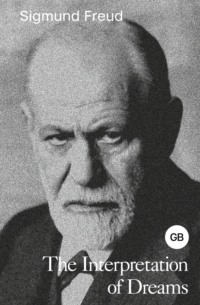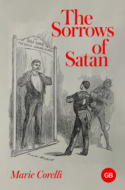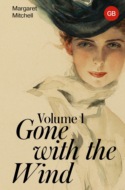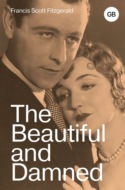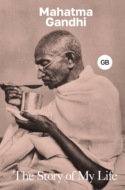Czytaj książkę: «The Interpretation of Dreams / Толкование сновидений»
© ООО «Издательство АСТ», 2024
I
The scientific literature on the problems of the dream1
In the following pages I shall prove that there exists a psychological technique by which dreams may be interpreted, and that upon the application of this method every dream will show itself to be a senseful psychological structure which may be introduced into an assignable place in the psychic activity of the waking state. I shall furthermore endeavour to explain the processes which give rise to the strangeness and obscurity of the dream, and to discover through them the nature of the psychic forces which operate, whether in combination or in opposition, to produce the dream. This accomplished, my investigation will terminate, as it will have reached the point where the problem of the dream meets with broader problems, the solution of which must be attempted through other material.
I must presuppose that the reader is acquainted with the work done by earlier authors as well as with the present status of the dream problem in science, since in the course of this treatise I shall not often have occasion to return to them. For, notwithstanding the effort of several thousand years, little progress has been made in the scientific understanding of dreams. This has been so universally acknowledged by the authors that it seems unnecessary to quote individual opinions. One will find in the writings indexed at the end of this book many stimulating observations and plenty of interesting material for our subject, but little or nothing that concerns the true nature of the dream or that solves definitively any of its enigmas. Still less of course has been transmitted to the knowledge of the educated laity.
The first book in which the dream is treated as an object of psychology seems to be that of Aristotle2 (Concerning Dreams and their Interpretation). Aristotle asserts that the dream is of demoniacal, though not of divine nature, which indeed contains deep meaning, if it be correctly interpreted. He was also acquainted with some of the characteristics of dream life, e. g., he knew that the dream turns slight sensations perceived during sleep into great ones (“one imagines that one walks through fire and feels hot, if this or that part of the body becomes slightly warmed”), which led him to conclude that dreams might easily betray to the physician the first indications of an incipient change in the body passing unnoticed during the day. I have been unable to go more deeply into the Aristotelian treatise, because of insufficient preparation and lack of skilled assistance.
As every one knows, the ancients before Aristotle did not consider the dream a product of the dreaming mind, but a divine inspiration, and in ancient times the two antagonistic streams, which one finds throughout in the estimates of dream life, were already noticeable. They distinguished between true and valuable dreams, sent to the dreamer to warn him or to foretell the future, and vain, fraudulent, and empty dreams, the object of which was to misguide or lead him to destruction2. This pre-scientific conception of the dream among the ancients was certainly in perfect keeping with their general view of life, which was wont to project as reality in the outer world that which possessed reality only within the mind. It, moreover, accounted for the main impression made upon the waking life by the memory left from the dream in the morning, for in this memory the dream, as compared with the rest of the psychic content, seems something strange, coming, as it were, from another world. It would likewise be wrong to suppose that the theory of the supernatural origin of dreams lacks followers in our own day; for leaving out of consideration all bigoted and mystical authors – who are perfectly justified in adhering to the remnants of the once extensive realm of the supernatural until they have been swept away by scientific explanation – one meets even sagacious men averse to anything adventurous, who go so far as to base their religious belief in the existence and co-operation of superhuman forces on the inexplicableness of the dream manifestations (Haffner32). The validity ascribed to the dream life by some schools of philosophy, e. g. the school of Schelling, is a distinct echo of the undisputed divinity of dreams in antiquity, nor is discussion closed on the subject of the mantic or prophetic power of dreams. This is due to the fact that the attempted psychological explanations are too inadequate to overcome the accumulated material, however strongly all those who devote themselves to a scientific mode of thought may feel that such assertions should be repudiated. To write a history of our scientific knowledge of dream problems is so difficult because, however valuable some parts of this knowledge may have been, no progress in definite directions has been discernible. There has been no construction of a foundation of assured results upon which future investigators could continue to build, but every new author takes up the same problems afresh and from the very beginning. Were I to follow the authors in chronological order, and give a review of the opinions each has held concerning the problems of the dream, I should be prevented from drawing a clear and complete picture of the present state of knowledge on the subject. I have therefore preferred to base the treatment upon themes rather than upon the authors, and I shall cite for each problem of the dream the material found in the literature for its solution.
But as I have not succeeded in mastering the entire literature, which is widely disseminated and interwoven with that on other subjects, I must ask my readers to rest content provided no fundamental fact or important viewpoint be lost in my description.
Until recently most authors have been led to treat the subjects of sleep and dream in the same connection, and with them they have also regularly treated analogous states of psychopathology, and other dreamlike states like hallucinations, visions, etc. In the more recent works, on the other hand, there has been a tendency to keep more closely to the theme, and to take as the subject one single question of the dream life. This change, I believe, is an expression of the conviction that enlightenment and agreement in such obscure matters can only be brought about by a series of detailed investigations. It is such a detailed investigation and one of a special psychological nature, that I would offer here. I have little occasion to study the problem of sleep, as it is essentially a psychological problem, although the change of functional determinations for the mental apparatus must be included in the character of sleep. The literature of sleep will therefore not be considered here.
A scientific interest in the phenomena of dreams as such leads to the following in part interdependent inquiries:
(a) The Relation of the Dream to the Waking State. – The naïve judgment of a person on awakening assumes that the dream – if indeed it does not originate in another world – at any rate has taken the dreamer into another world. The old physiologist, Burdach,8 to whom we are indebted for a careful and discriminating description of the phenomena of dreams, expressed this conviction in an often-quoted passage, p. 474: “The waking life never repeats itself with its trials and joys, its pleasures and pains, but, on the contrary, the dream aims to relieve us of these. Even when our whole mind is filled with one subject, when profound sorrow has torn our hearts or when a task has claimed the whole power of our mentality, the dream either gives us something entirely strange, or it takes for its combinations only a few elements from reality, or it only enters into the strain of our mood and symbolises reality.”
L. Strümpell66 expresses himself to the same effect in his Nature and Origin of Dreams (p. 16), a study which is everywhere justly held in high respect: “He who dreams turns his back upon the world of waking consciousness” (p. 17). “In the dream the memory of the orderly content of the waking consciousness and its normal behaviour is as good as entirely lost” (p. 19). “The almost complete isolation of the mind in the dream from the regular normal content and course of the waking state…”
But the overwhelming majority of the authors have assumed a contrary view of the relation of the dream to waking life. Thus Haffner32 (p. 19): “First of all the dream is the continuation of the waking state. Our dreams always unite themselves with those ideas which have shortly before been in our consciousness. Careful examination will nearly always find a thread by which the dream has connected itself with the experience of the previous day.” Weygandt75 (p. 6), flatly contradicts the above cited statement of Burdach: “For it may often be observed, apparently in the great majority of dreams, that they lead us directly back into everyday life, instead of releasing us from it.” Maury48 (p. 56), says in a concise formula: “Nous rêvons de ce que nous avons vu, dit, desiré ou fait.” Jessen,36 in his Psychology, published in 1855 (p. 530), is somewhat more explicit: “The content of dreams is more or less determined by the individual personality, by age, sex, station in life, education, habits, and by events and experiences of the whole past life.”
The ancients had the same idea about the dependence of the dream content upon life. I cite Radestock54 (p. 139): “When Xerxes, before his march against Greece, was dissuaded from this resolution by good counsel, but was again and again incited by dreams to undertake it, one of the old rational dream-interpreters of the Persians, Artabanus, told him very appropriately that dream pictures mostly contain that of which one has been thinking while awake.”
In the didactic poem of Lucretius, De Rerum Natura (IV, v. 959), occurs this passage:-
“Et quo quisque fere studio devinctus adhaeret,
aut quibus in rebus multum sumus ante morati
atque in ea ratione fuit contenta magis mens,
in somnis eadem plerumque videmur obire;
causidici causas agere et componere leges,
induperatores pugnare ac proelia obire,” etc., etc.
Cicero (De Divinatione, II) says quite similarly, as does also Maury much later:-
“Maximeque reliquiae earum rerum moventur in animis et agitantur, de quibus vigilantes aut cogitavimus aut egimus.”
The contradiction expressed in these two views as to the relation between dream life and waking life seems indeed insoluble. It will therefore not be out of place to mention the description of F. W. Hildebrandt35 (1875), who believes that the peculiarities of the dream can generally be described only by calling them a “series of contrasts which apparently shade off into contradictions” (p. 8). “The first of these contrasts is formed on the one hand by the strict isolation or seclusion of the dream from true and actual life, and on the other hand by the continuous encroachment of the one upon the other, and the constant dependency of one upon the other. The dream is something absolutely separated from the reality experienced during the waking state; one may call it an existence hermetically sealed up and separated from real life by an unsurmountable chasm. It frees us from reality, extinguishes normal recollection of reality, and places us in another world and in a totally different life, which at bottom has nothing in common with reality…” Hildebrandt then asserts that in falling asleep our whole being, with all its forms of existence, disappears “as through an invisible trap door.” In the dream one is perhaps making a voyage to St. Helena in order to offer the imprisoned Napoleon something exquisite in the way of Moselle wine. One is most amicably received by the ex-emperor, and feels almost sorry when the interesting illusion is destroyed on awakening. But let us now compare the situation of the dream with reality. The dreamer has never been a wine merchant, and has no desire to become one. He has never made a sea voyage, and St. Helena is the last place he would take as destination for such a voyage. The dreamer entertains no sympathetic feeling for Napoleon, but on the contrary a strong patriotic hatred. And finally the dreamer was not yet among the living when Napoleon died on the island; so that it was beyond the reach of possibility for him to have had any personal relations with Napoleon. The dream experience thus appears as something strange, inserted between two perfectly harmonising and succeeding periods.
“Nevertheless,” continues Hildebrandt, “the opposite is seemingly just as true and correct. I believe that hand in hand with this seclusion and isolation there can still exist the most intimate relation and connection. We may justly say that no matter what the dream offers, it finds its material in reality and in the psychic life arrayed around this reality. However strange the dream may seem, it can never detach itself from reality, and its most sublime as well as its most farcical structures must always borrow their elementary material either from what we have seen with our eyes in the outer world, or from what has previously found a place somewhere in our waking thoughts; in other words, it must be taken from what we had already experienced either objectively or subjectively.”
(b) The Material of the Dream. – Memory in the Dream. – That all the material composing the content of the dream in some way originates in experience, that it is reproduced in the dream, or recalled, – this at least may be taken as an indisputable truth. Yet it would be wrong to assume that such connection between dream content and reality will be readily disclosed as an obvious product of the instituted comparison. On the contrary, the connection must be carefully sought, and in many cases it succeeds in eluding discovery for a long time. The reason for this is to be found in a number of peculiarities evinced by the memory in dreams, which, though universally known, have hitherto entirely eluded explanation. It will be worth while to investigate exhaustively these characteristics.
It often happens that matter appears in the dream content which one cannot recognise later in the waking state as belonging to one̕s knowledge and experience. One remembers well enough having dreamed about the subject in question, but cannot recall the fact or time of the experience. The dreamer is therefore in the dark as to the source from which the dream has been drawing, and is even tempted to believe an independently productive activity on the part of the dream, until, often long afterwards, a new episode brings back to recollection a former experience given up as lost, and thus reveals the source of the dream. One is thus forced to admit that something has been known and remembered in the dream that has been withdrawn from memory during the waking state.
Delbœuf16 narrates from his own experience an especially impressive example of this kind. He saw in his dream the courtyard of his house covered with snow, and found two little lizards half-frozen and buried in the snow. Being a lover of animals, he picked them up, warmed them, and put them back into a crevice in the wall which was reserved for them. He also gave them some small fern leaves that had been growing on the wall, which he knew they were fond of. In the dream he knew the name of the plant: Asplenium ruta muralis. The dream then continued, returning after a digression to the lizards, and to his astonishment Delbœuf saw two other little animals falling upon what was left of the ferns. On turning his eyes to the open field he saw a fifth and a sixth lizard running into the hole in the wall, and finally the street was covered with a procession of lizards, all wandering in the same direction, etc.
In his waking state Delbœuf knew only a few Latin names of plants, and nothing of the Asplenium. To his great surprise he became convinced that a fern of this name really existed and that the correct name was Asplenium ruta muraria, which the dream had slightly disfigured. An accidental coincidence could hardly be considered, but it remained a mystery for Delbœuf whence he got his knowledge of the name Asplenium in the dream.
The dream occurred in 1862. Sixteen years later, while at the house of one of his friends, the philosopher noticed a small album containing dried plants resembling the albums that are sold as souvenirs to visitors in many parts of Switzerland. A sudden recollection occurred to him; he opened the herbarium, and discovered therein the Asplenium of his dream, and recognised his own handwriting in the accompanying Latin name. The connection could now be traced. While on her wedding trip, a sister of this friend visited Delbœuf in 1860-two years prior to the lizard dream. She had with her at the time this album, which was intended for her brother, and Delbœuf took the trouble to write, at the dictation of a botanist, under each of the dried plants the Latin name.
The favourable accident which made possible the report of this valuable example also permitted Delbœuf to trace another portion of this dream to its forgotten source. One day in 1877 he came upon an old volume of an illustrated journal, in which he found pictured the whole procession of lizards just as he had dreamed it in 1862. The volume bore the date of 1861, and Delbœuf could recall that he had subscribed to the journal from its first appearance.
That the dream has at its disposal recollections which are inaccessible to the waking state is such a remarkable and theoretically important fact that I should like to urge more attention to it by reporting several other “Hypermnesic Dreams.” Maury48 relates that for some time the word Mussidan used to occur to his mind during the day. He knew it to be the name of a French city, but nothing else. One night he dreamed of a conversation with a certain person who told him that she came from Mussidan, and, in answer to his question where the city was, she replied: “Mussidan is a principal country town in the Département de La Dordogne.” On waking, Maury put no faith in the information received in his dream; the geographical lexicon, however, showed it to be perfectly correct. In this case the superior knowledge of the dream is confirmed, but the forgotten source of this knowledge has not been traced.
Jessen36 tells (p. 55) of a quite similar dream occurrence, from more remote times. “Among others we may here mention the dream of the elder Scaliger (Hennings, l. c., p. 300), who wrote a poem in praise of celebrated men of Verona, and to whom a man, named Brugnolus, appeared in a dream, complaining that he had been neglected. Though Scaliger did not recall ever having heard of him, he wrote some verses in his honour, and his son later discovered at Verona that a Brugnolus had formerly been famous there as a critic.
Myers is said to have published a whole collection of such hypermnesic dreams in the Proceedings of the Society for Psychical Research, which are unfortunately inaccessible to me. I believe every one who occupies himself with dreams will recognise as a very common phenomenon the fact that the dream gives proof of knowing and recollecting matters unknown to the waking person. In my psychoanalytic investigations of nervous patients, of which I shall speak later, I am every week more than once in position to convince my patients from their dreams that they are well acquainted with quotations, obscene expressions, etc., and that they make use of these in their dreams, although they have forgotten them in the waking state. I shall cite here a simple case of dream hypermnesia because it was easy to trace the source which made the knowledge accessible to the dream.
A patient dreamed in a lengthy connection that he ordered a “Kontuszówka” in a café, and after reporting this inquired what it might mean, as he never heard the name before. I was able to answer that Kontuszówka was a Polish liquor which he could not have invented in his dream, as the name had long been familiar to me in advertisements. The patient would not at first believe me, but some days later, after he had realised his dream of the café, he noticed the name on a signboard at the street corner, which he had been obliged to pass for months at least twice a day.
I have learned from my own dreams how largely the discovery of the origin of some of the dream elements depends on accident. Thus, for years before writing this book, I was haunted by the picture of a very simply formed church tower which I could not recall having seen. I then suddenly recognised it with absolute certainty at a small station between Salzburg and Reichenhall. This was in the later nineties, and I had travelled over the road for the first time in the year 1886. In later years, when I was already busily engaged in the study of dreams, I was quite annoyed at the frequent recurrence of the dream picture of a certain peculiar locality. I saw it in definite local relation to my person – to my left, a dark space from which many grotesque sandstone figures stood out. A glimmer of recollection, which I did not quite credit, told me it was the entrance to a beer-cellar, but I could explain neither the meaning nor the origin of this dream picture. In 1907 I came by chance to Padua, which, to my regret, I had been unable to visit since 1895. My first visit to this beautiful university city was unsatisfactory; I was unable to see Giotto̕s frescoes in the church of the Madonna dell̕ Arena, and on my way there turned back on being informed that the little church was closed on the day. On my second visit, twelve years later, I thought of compensating myself for this, and before everything else I started out for Madonna dell̕ Arena. On the street leading to it, on my left, probably at the place where I had turned in 1895, I discovered the locality which I had so often seen in the dream, with its sandstone figures. It was in fact the entrance to a restaurant garden.
One of the sources from which the dream draws material for reproduction – material which in part is not recalled or employed in waking thought – is to be found in childhood. I shall merely cite some of the authors who have observed and emphasized this.
Hildebrandt35 (p. 23): “It has already been expressly admitted that the dream sometimes brings back to the mind with wonderful reproductive ability remote and even forgotten experiences from the earliest periods.”
Strümpell66 (p. 40): “The subject becomes more interesting when we remember how the dream sometimes brings forth, as it were, from among the deepest and heaviest strata which later years have piled upon the earliest childhood experiences, the pictures of certain places, things, and persons, quite uninjured and with their original freshness. This is not limited merely to such impressions as have gained vivid consciousness during their origin or have become impressed with strong psychic validity, and then later return in the dream as actual reminiscences, causing pleasure to the awakened consciousness. On the contrary, the depths of the dream memory comprise also such pictures of persons, things, places, and early experiences as either possessed but little consciousness and no psychic value at all, or have long ago lost both, and therefore appear totally strange and unknown both in the dream and in the waking state, until their former origin is revealed.”
Volkelt72 (p. 119): “It is essentially noteworthy how easily infantile and youthful reminiscences enter into the dream. What we have long ceased to think about, what has long since lost for us all importance, is constantly recalled by the dream.”
The sway of the dream over the infantile material, which, as is well known, mostly occupies the gaps in the conscious memory, causes the origin of interesting hypermnestic dreams, a few of which I shall here report. Maury48 relates (p. 92) that as a child he often went from his native city, Meaux, to the neighbouring Trilport, where his father superintended the construction of a bridge. On a certain night a dream transported him to Trilport, and he was again playing in the city streets. A man approached him wearing some sort of uniform. Maury asked him his name, and he introduced himself, saying that his name was C-, and that he was a bridge guard. On waking, Maury, who still doubted the reality of the reminiscence, asked his old servant, who had been with him in his childhood, whether she remembered a man of this name. “Certainly,” was the answer, “he used to be watchman on the bridge which your father was building at that time.”
Maury reports another example demonstrating just as nicely the reliability of infantile reminiscences appearing in dreams. Mr. F-, who had lived as a child in Montbrison, decided to visit his home and old friends of his family after an absence of twenty-five years. The night before his departure he dreamt that he had reached his destination, and that he met near Montbrison a man, whom he did not know by sight, who told him he was Mr. F., a friend of his father. The dreamer remembered that as a child he had known a gentleman of this name, but on waking he could no longer recall his features. Several days later, having really arrived at Montbrison, he found the supposedly unknown locality of his dream, and there met a man whom he at once recognised as the Mr. F. of his dream. The real person was only older than the one in the dream picture.
I may here relate one of my own dreams in which the remembered impression is replaced by an association. In my dream I saw a person whom I recognised, while dreaming, as the physician of my native town. The features were indistinct and confused with the picture of one of my colleague teachers, whom I still see occasionally. What association there was between the two persons I could not discover on awakening. But upon questioning my mother about the physician of my early childhood, I discovered that he was a one-eyed man. My teacher, whose figure concealed that of the physician in the dream, was also one-eyed. I have not seen the physician for thirty-eight years, and I have not to my knowledge thought of him in my waking state, although a scar on my chin might have reminded me of his help.
As if to counterbalance the immense rôle ascribed to the infantile impressions in the dream, many authors assert that the majority of dreams show elements from the most recent time. Thus Robert55 (p. 46) declares that the normal dream generally occupies itself only with the impressions of the recent days. We learn indeed that the theory of the dream advanced by Robert imperatively demands that the old impressions should be pushed back, and the recent ones brought to the front. Nevertheless the fact claimed by Robert really exists; I can confirm this from my own investigations. Nelson,50 an American author, thinks that the impressions most frequently found in the dream date from two or three days before, as if the impressions of the day immediately preceding the dream were not sufficiently weakened and remote.
Many authors who are convinced of the intimate connection between the dream content and the waking state are impressed by the fact that impressions which have intensely occupied the waking mind appear in the dream only after they have been to some extent pushed aside from the elaboration of the waking thought. Thus, as a rule, we do not dream of a dead beloved person while we are still overwhelmed with sorrow. Still Miss Hallam,33 one of the latest observers, has collected examples showing the very opposite behaviour, and claims for the point the right of individual psychology.
The third and the most remarkable and incomprehensible peculiarity of the memory in dreams, is shown in the selection of the reproduced material, for stress is laid not only on the most significant, but also on the most indifferent and superficial reminiscences. On this point I shall quote those authors who have expressed their surprise in the most emphatic manner.
Hildebrandt35 (p. 11): “For it is a remarkable fact that dreams do not, as a rule, take their elements from great and deep-rooted events or from the powerful and urgent interests of the preceding day, but from unimportant matters, from the most worthless fragments of recent experience or of a more remote past. The most shocking death in our family, the impressions of which keep us awake long into the night, becomes obliterated from our memories, until the first moment of awakening brings it back to us with depressing force. On the other hand, the wart on the forehead of a passing stranger, of whom we did not think for a second after he was out of sight, plays its part in our dreams.”
Strümpell66 (p. 39): “…such cases where the analysis of a dream brings to light elements which, although derived from events of the previous day or the day before the last, yet prove to be so unimportant and worthless for the waking state that they merge into forgetfulness shortly after coming to light. Such occurrences may be statements of others heard accidentally or actions superficially observed, or fleeting perceptions of things or persons, or single phrases from books, etc.”
Havelock Ellis23 (p. 727): “The profound emotions of waking life, the questions and problems on which we spread our chief voluntary mental energy, are not those which usually present themselves at once to dream-consciousness. It is, so far as the immediate past is concerned, mostly the trifling, the incidental, the “forgotten” impressions of daily life which reappear in our dreams. The psychic activities that are awake most intensely are those that sleep most profoundly.”
Binz4 (p. 45) takes occasion from the above-mentioned characteristics of the memory in dreams to express his dissatisfaction with explanations of dreams which he himself has approved of: “And the normal dream raises similar questions. Why do we not always dream of memory impressions from the preceding days, instead of going back to the almost forgotten past lying far behind us without any perceptible reason? Why in a dream does consciousness so often revive the impression of indifferent memory pictures while the cerebral cells bearing the most sensitive records of experience remain for the most part inert and numb, unless an acute revival during the waking state has shortly before excited them?”
